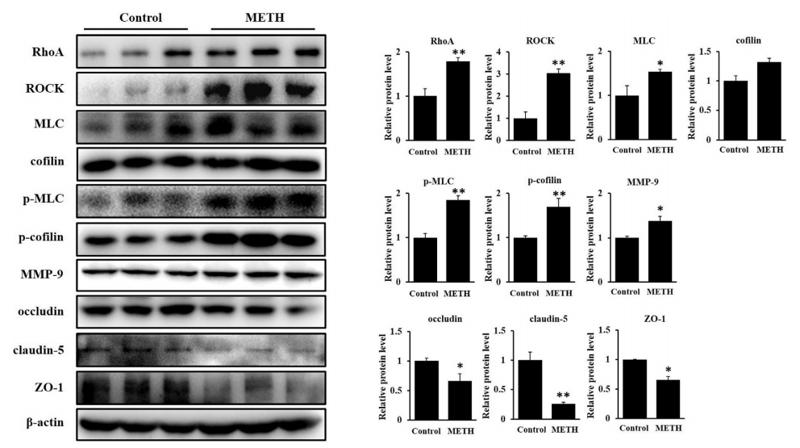Phospho-MRLC1 (Ser19) Antibody - #AF5443
| Product: | Phospho-MRLC1 (Ser19) Antibody |
| Catalog: | AF5443 |
| Description: | Rabbit polyclonal antibody to Phospho-MRLC1 (Ser19) |
| Application: | WB IHC |
| Cited expt.: | WB |
| Reactivity: | Human, Mouse, Rat |
| Prediction: | Pig, Bovine, Horse, Sheep, Rabbit, Dog, Chicken, Xenopus |
| Mol.Wt.: | 20 kDa; 20kD(Calculated). |
| Uniprot: | P24844 |
| RRID: | AB_2837927 |
Related Downloads
Protocols
Product Info
*The optimal dilutions should be determined by the end user. For optimal experimental results, antibody reuse is not recommended.
*Tips:
WB: For western blot detection of denatured protein samples. IHC: For immunohistochemical detection of paraffin sections (IHC-p) or frozen sections (IHC-f) of tissue samples. IF/ICC: For immunofluorescence detection of cell samples. ELISA(peptide): For ELISA detection of antigenic peptide.
Cite Format: Affinity Biosciences Cat# AF5443, RRID:AB_2837927.
Fold/Unfold
20 kDa myosin light chain;Human 20kDa myosin light chain (MLC2) mRNA complete cds;LC20;MGC3505;MLC 2;MLC-2C;MLC2;MLY 9;MRLC1;MYL9;MYL9_HUMAN;Myosin light chain 9 regulatory;Myosin light polypeptide 9 regulatory;myosin regulatory light chain 1;Myosin regulatory light chain 2;Myosin regulatory light chain 2 smooth muscle isoform;Myosin regulatory light chain 9;Myosin regulatory light chain MRLC1;Myosin regulatory light polypeptide 9;Myosin RLC;Myosin vascular smooth muscle light chain 2;MYRL2;OTTHUMP00000030857;smooth muscle isoform;
Immunogens
A synthesized peptide derived from human MRLC1 around the phosphorylation site of Ser19) .
- P24844 MYL9_HUMAN:
- Protein BLAST With
- NCBI/
- ExPASy/
- Uniprot
MSSKRAKAKTTKKRPQRATSNVFAMFDQSQIQEFKEAFNMIDQNRDGFIDKEDLHDMLASLGKNPTDEYLEGMMSEAPGPINFTMFLTMFGEKLNGTDPEDVIRNAFACFDEEASGFIHEDHLRELLTTMGDRFTDEEVDEMYREAPIDKKGNFNYVEFTRILKHGAKDKDD
Predictions
Score>80(red) has high confidence and is suggested to be used for WB detection. *The prediction model is mainly based on the alignment of immunogen sequences, the results are for reference only, not as the basis of quality assurance.
High(score>80) Medium(80>score>50) Low(score<50) No confidence
Research Backgrounds
Myosin regulatory subunit that plays an important role in regulation of both smooth muscle and nonmuscle cell contractile activity via its phosphorylation. Implicated in cytokinesis, receptor capping, and cell locomotion.
Phosphorylation increases the actin-activated myosin ATPase activity and thereby regulates the contractile activity. It is required to generate the driving force in the migration of the cells but not necessary for localization of myosin-2 at the leading edge.
Smooth muscle tissues and in some, but not all, nonmuscle cells.
Research Fields
· Cellular Processes > Cellular community - eukaryotes > Focal adhesion. (View pathway)
· Cellular Processes > Cellular community - eukaryotes > Tight junction. (View pathway)
· Cellular Processes > Cell motility > Regulation of actin cytoskeleton. (View pathway)
· Environmental Information Processing > Signal transduction > cGMP-PKG signaling pathway. (View pathway)
· Environmental Information Processing > Signal transduction > cAMP signaling pathway. (View pathway)
· Organismal Systems > Circulatory system > Vascular smooth muscle contraction. (View pathway)
· Organismal Systems > Immune system > Leukocyte transendothelial migration. (View pathway)
· Organismal Systems > Endocrine system > Oxytocin signaling pathway.
References
Application: WB Species: rat Sample: hippocampus
Application: WB Species: rat Sample: RASMCs
Restrictive clause
Affinity Biosciences tests all products strictly. Citations are provided as a resource for additional applications that have not been validated by Affinity Biosciences. Please choose the appropriate format for each application and consult Materials and Methods sections for additional details about the use of any product in these publications.
For Research Use Only.
Not for use in diagnostic or therapeutic procedures. Not for resale. Not for distribution without written consent. Affinity Biosciences will not be held responsible for patent infringement or other violations that may occur with the use of our products. Affinity Biosciences, Affinity Biosciences Logo and all other trademarks are the property of Affinity Biosciences LTD.


